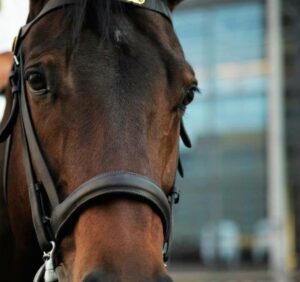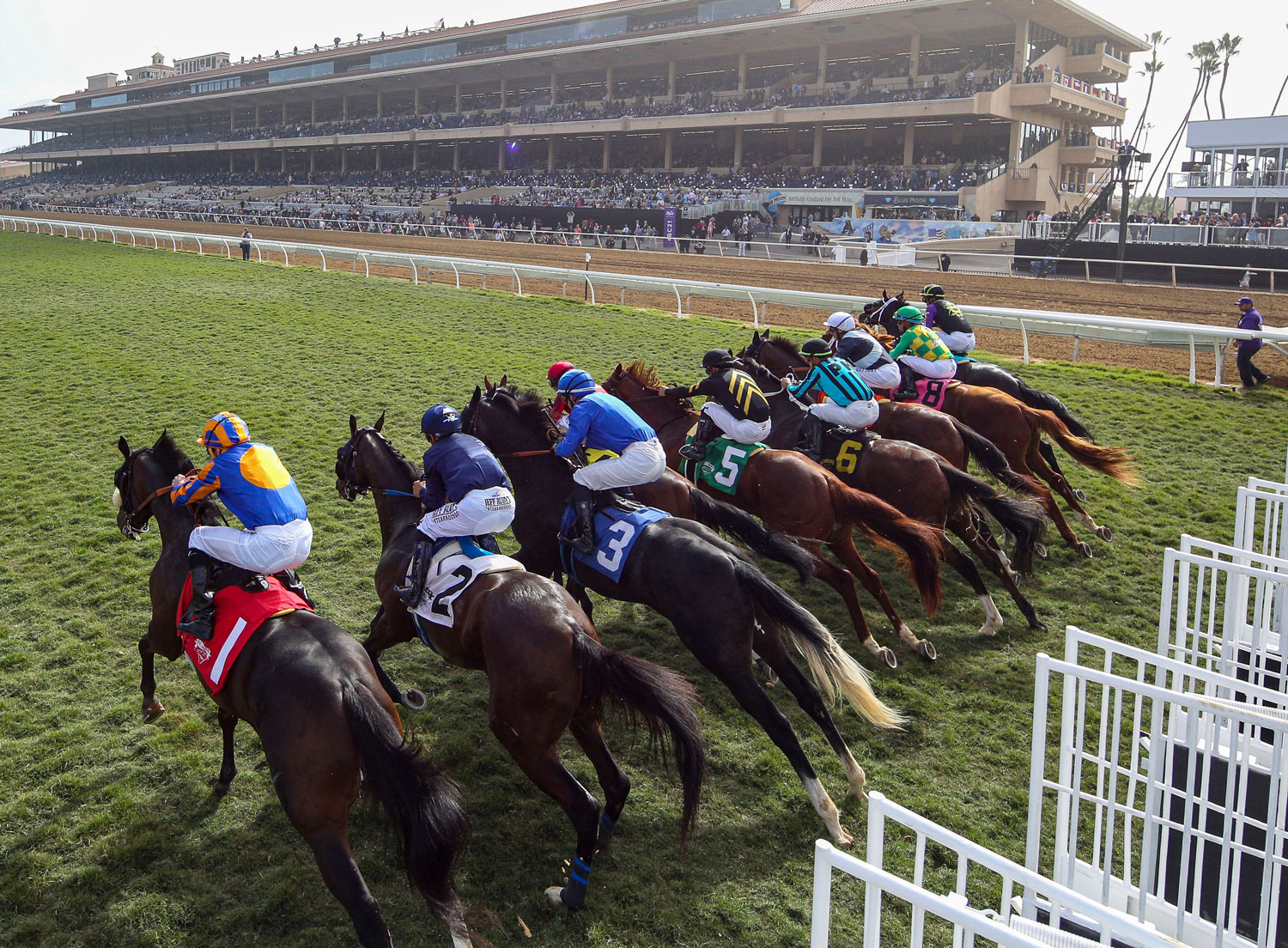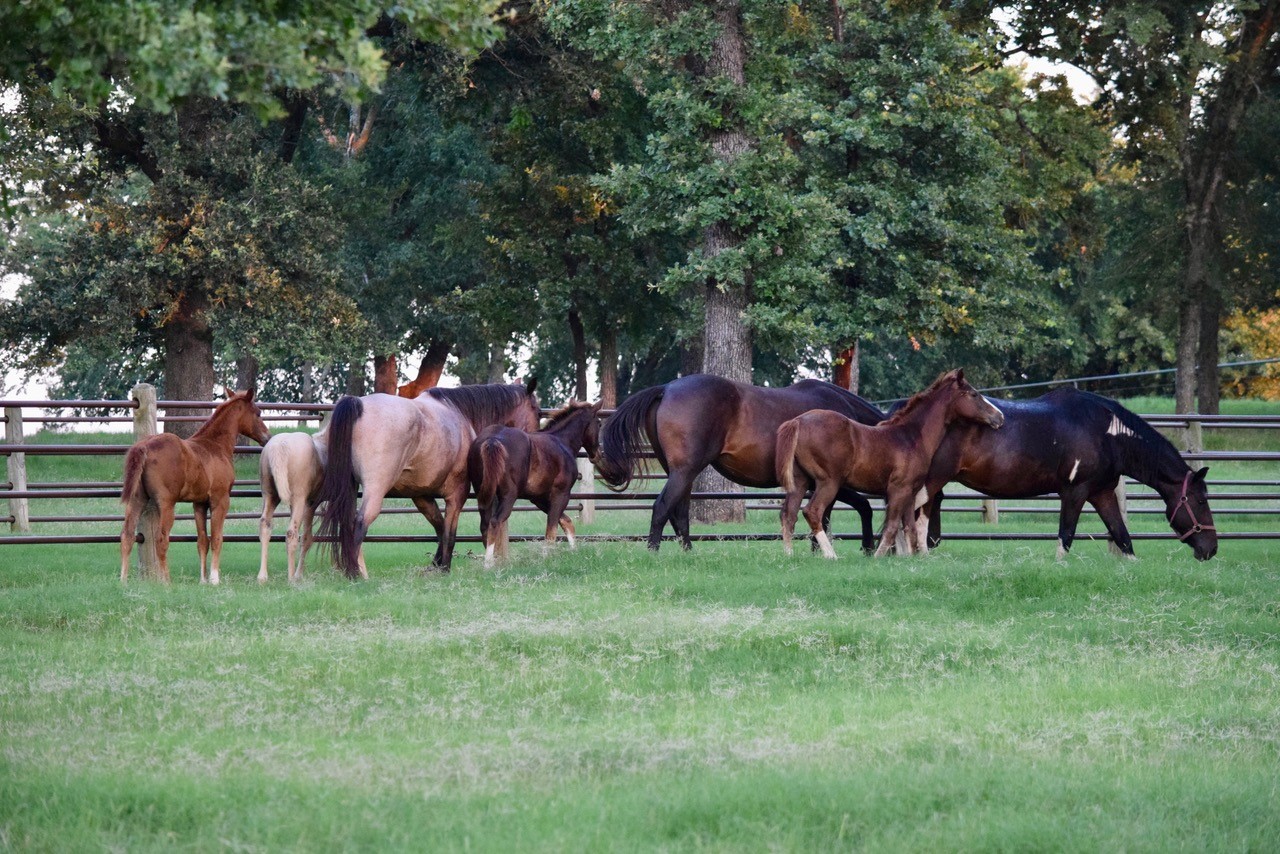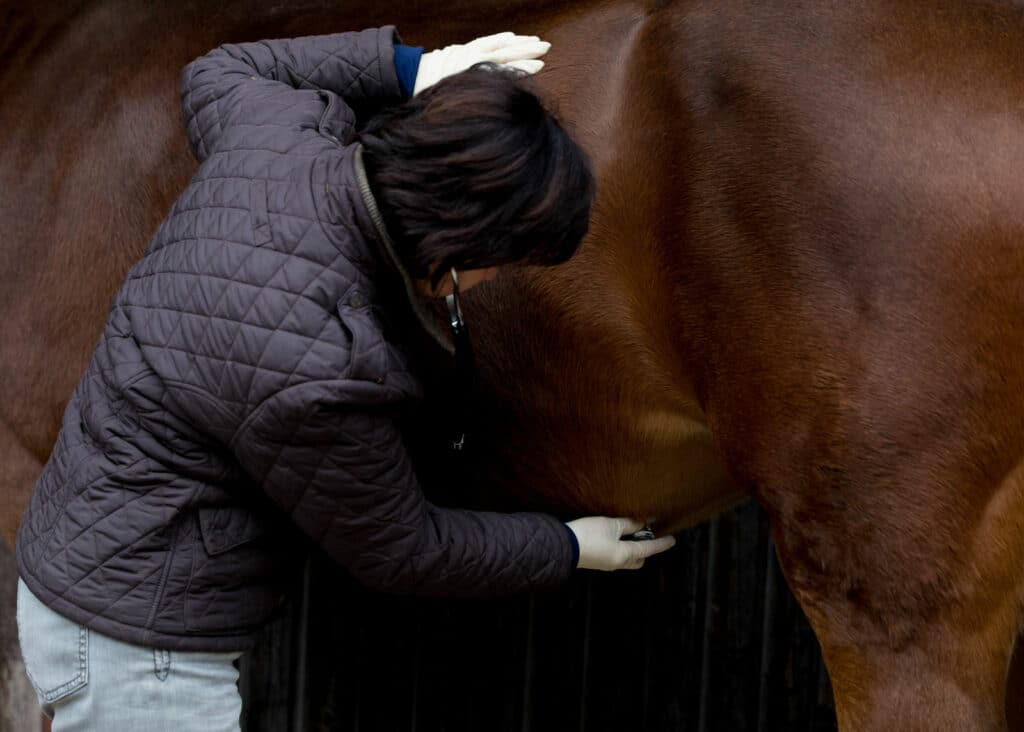 This is Pt. 4 of Parasites and the Equine Gut, a new series investigating the connection between parasite control and your horse’s digestive health — and what we can do to help.
This is Pt. 4 of Parasites and the Equine Gut, a new series investigating the connection between parasite control and your horse’s digestive health — and what we can do to help.
In parts 1-3 of this series on parasites and gi tract health, we talked a lot about
how parasites can negatively impact your horse’s digestive health and affect his overall well-being, including
nutritional deficiencies and
anemia. In
Pt. 4, Parasites and Ulcers in Horses, we’ll be talking more specifically about the correlation between both gastric and colonic ulcers and parasites.
Parasites and Equine Gastric Ulcers
A
gastric ulcer is defined as a lesion on the lining of the horse’s stomach. It can be difficult for a veterinarian to diagnose a gastric ulcer without an endoscope, as its subtle signs (changes in attitude, poor appetite, decreased performance and energy or decline in body condition) are easily attributed to other causes. When several studies came out suggesting that more than 90 percent of performance horses were affected by gastric ulcers, though, the horse community began to pay attention.
No one knows exactly what induces gastric ulcers, but many vets blame stomach acid, stress and occasionally bacteria for compromising the protective mucosal lining and causing ulcers.
Given what we’ve discussed about parasites and the damage they cause to the stomach, though, it’s likely that parasites — and particularly, bots — may contribute to the development of ulcers.
As we mentioned in Pt. 2 of this series, bot larvae live in the stomach and cause damage that may include small wounds or inflammation. A horse’s stomach is separated into two distinct sections divided by a line called the margo plicatus. The lower two-thirds of the stomach, called the glandular portion, is more protected from acids due to the thickness of the mucosal lining and the presence of an acid buffer and mucus. The upper third of the stomach, called the squamous or non-glandular portion, is thinner and less protected. Bots tend to live just above the margo plicatus, where the mucosal lining begins to thin. So it’s not surprising that an infestation of bots can cause gastric ulcers — and it’s also not surprising that the great majority of gastric ulcers are found just above the margo plicatus as well.
Parasites and Colonic Ulcers in Horses
While gastric ulcers have been the focus of increasingly more conversations about digestive health,
colonic ulcers are still a relative unknown for many horse owners. Like gastric ulcers, colonic ulcers are also caused when the protective mucosal lining of the colon wall is compromised. Until recently there were only a few
ways to test for them, so they often flew under the radar. However, new research suggests that colonic ulcers are quite common in performance horses — and particularly in those already suffering from gastric ulcers.
The connection between parasites and colonic ulcers is similar to that of gastric ulcers. That is, when parasites damage the mucosal lining via migration or by attaching to the lining to feed, they leave behind an exposed pit that can become infected and/or ulcerated. Large strongyles and bots are particularly prone to causing this type of damage, but one type of small strongyle —
T tenuicollis — can also produce severe ulcers in the wall of the colon.
How Equine Ulcers Affect Our Horses’ Health
While ulcers may not have been top of mind in conversations about digestive health until the past few years, ongoing research continues to suggest that a great majority of our horses are suffering from both types of ulcers — and that’s a problem. Ulcers can cause symptoms clearly related to the gut, including
weight loss, diarrhea,
poor condition and loss of appetite. In addition,
gastric ulcers may be linked to cribbing while colonic ulcers may cause girthiness and sensitivity in the flank area. And many
performance and behavioral issues can be related to the discomfort and side effects of poor gi tract health.
An
appropriate diet and feeding schedule can help mitigate some of the factors that cause ulcers, as can an appropriate strategy for controlling parasites.
Up Next: Parasites and Colic
Parasites can also be a contributing factor to colic, whether caused by the damage inflicted by worms, or a build-up of parasites (alive or dead).
Subscribe to the SUCCEED blog so you don’t miss
Pt. 5: Parasites and Colic in this ongoing series on parasites and the equine gut.
 This is Pt. 4 of Parasites and the Equine Gut, a new series investigating the connection between parasite control and your horse’s digestive health — and what we can do to help.
In parts 1-3 of this series on parasites and gi tract health, we talked a lot about how parasites can negatively impact your horse’s digestive health and affect his overall well-being, including nutritional deficiencies and anemia. In Pt. 4, Parasites and Ulcers in Horses, we’ll be talking more specifically about the correlation between both gastric and colonic ulcers and parasites.
This is Pt. 4 of Parasites and the Equine Gut, a new series investigating the connection between parasite control and your horse’s digestive health — and what we can do to help.
In parts 1-3 of this series on parasites and gi tract health, we talked a lot about how parasites can negatively impact your horse’s digestive health and affect his overall well-being, including nutritional deficiencies and anemia. In Pt. 4, Parasites and Ulcers in Horses, we’ll be talking more specifically about the correlation between both gastric and colonic ulcers and parasites.



